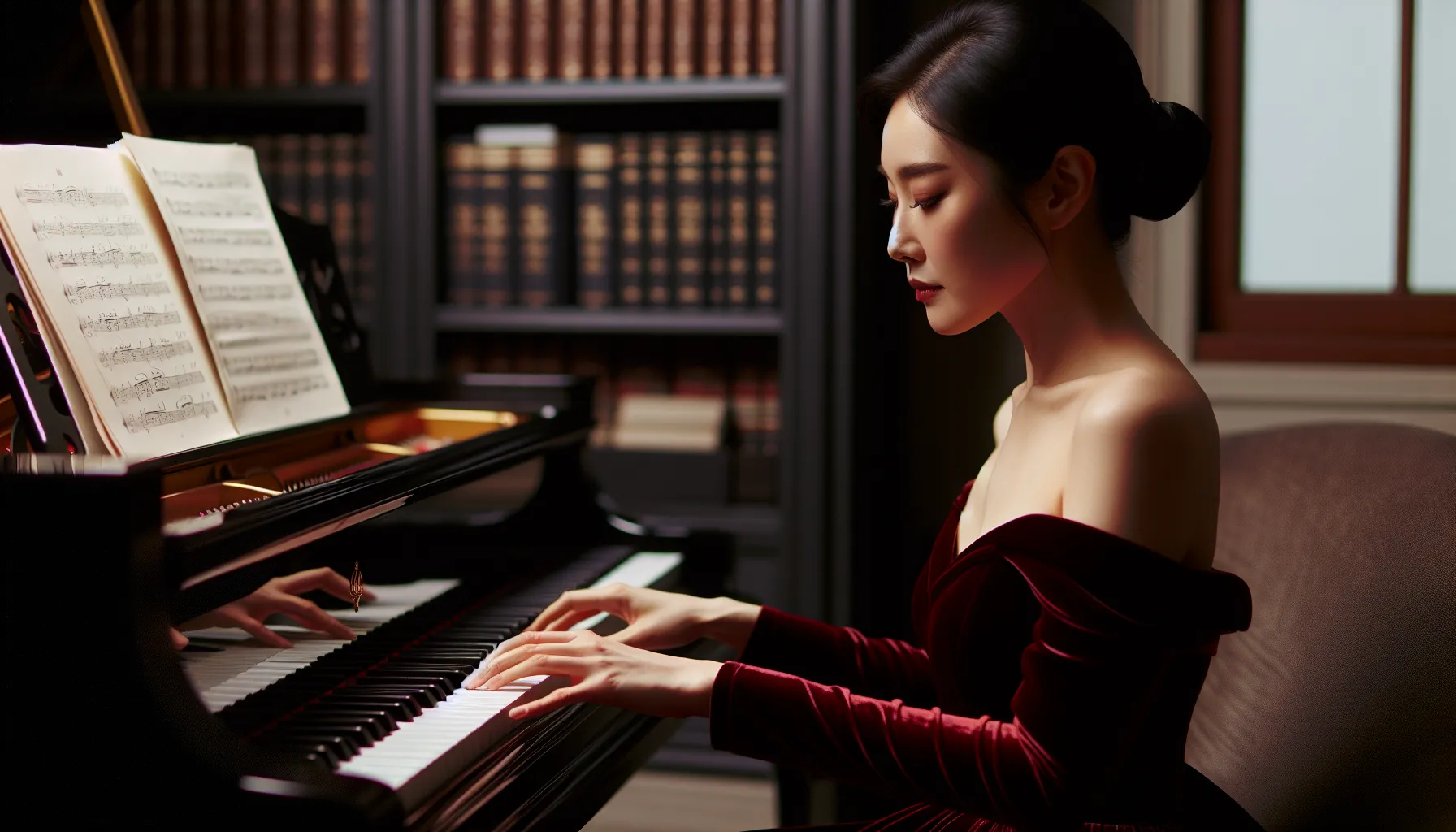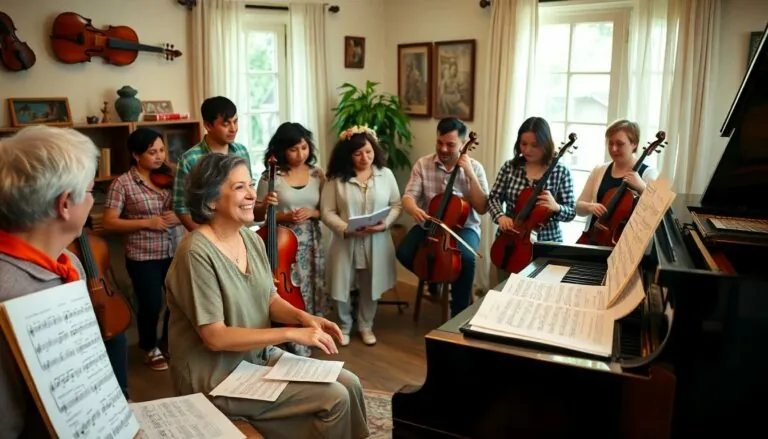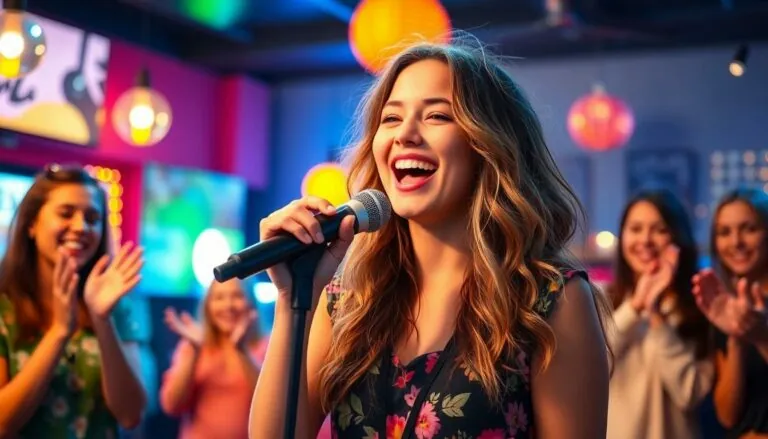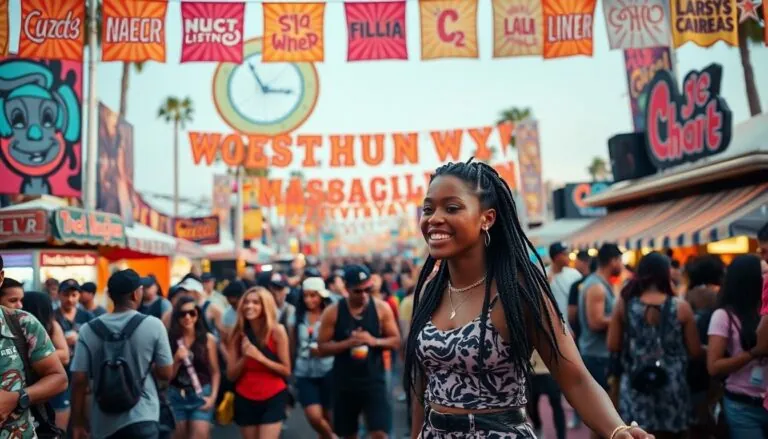Table of Contents
ToggleIn a world where cat videos reign supreme, classical music videos are the hidden gems waiting to be discovered. Imagine the elegance of a symphony combined with stunning visuals that could make even a statue tap its toes. These videos don’t just bring the music to life; they create an experience that’s both enriching and entertaining.
Overview of Classical Music Videos
Classical music videos blend sophisticated audio with striking visuals, offering a unique audio-visual experience. The range of these videos includes performances by orchestras, soloists, and even animated interpretations that captivate audiences. High-definition recordings often showcase famous classical pieces, allowing viewers to appreciate both the artistry of musicians and the beauty of their surroundings.
Many classical music videos feature renowned composers, such as Beethoven, Mozart, and Vivaldi, enhancing cultural and educational aspects. These productions can transform a standard listening session into an immersive event. Engaging visuals paired with powerful symphonies foster a deeper emotional connection, appealing to a broad audience, including those new to classical music.
Platforms like YouTube and Vimeo host numerous classical music videos, enabling easy access. Emerging artists use this medium to reach a global audience, presenting innovative interpretations of traditional works. Institutions also create content to promote educational initiatives, blending structured learning with artistic expression.
Numerous classical music videos showcase collaborative projects that bring together artists from various disciplines. Trends have evolved to include visual arts, dance, and even storytelling elements, enriching the viewer’s experience. This multimedia approach expands the classic art form’s appeal, drawing in diverse demographics and bridging generational gaps.
Quality production values have become essential for capturing the intricate dynamics of classical performances. Enhanced filming techniques highlight the skill of musicians while employing editing methods to maintain engagement. Overall, the fusion of elegant music and stunning visuals sets classical music videos apart, making them compelling choices in today’s digital entertainment landscape.
Historical Context
Classical music videos possess a rich history, evolving alongside advancements in technology and artistic expression. Their journey reflects the continuous transformation of classical music’s presentation and accessibility.
Evolution of Classical Music Videos
From simple recordings of orchestral performances to visually engaging productions, the evolution of classical music videos marks a significant change. Early recordings focused primarily on audio quality, often neglecting visual elements. As filmmaking technology advanced in the late 20th century, producers began integrating striking visuals into performances. The rise of the internet in the 21st century further transformed how audiences experienced classical music. Accessible platforms allowed musicians to reach wider audiences through innovative video presentations, thus expanding the genre’s audience.
Key Milestones in Classical Music Video Production
Specific milestones shaped the classical music video landscape. In the 1960s, televised concerts introduced larger audiences to classical music, providing a foundation for future productions. The 1980s marked the arrival of music videos on MTV, influencing classical artists to create content with similar aesthetics. By the 2000s, high-definition filming techniques enhanced visual fidelity, further enriching the viewing experience. Today, collaborations among artists, filmmakers, and animators push boundaries, creating immersive interpretations of classical compositions. Each milestone highlights how technology and creativity intersect to elevate classical music’s presentation.
Notable Examples of Classical Music Videos
Numerous classical music videos stand out for their artistry and innovation. These productions invite both veteran listeners and newcomers to appreciate the depth of classical music through compelling visuals.
Iconic Music Videos
Several iconic music videos have left a lasting impact on the genre. “The Four Seasons” by Vivaldi, featuring animated interpretations, captivates audiences with its seasonal imagery. André Rieu’s performances of Strauss waltzes bring theatrical flair to the screen, immersing viewers in festive atmospheres. Yo-Yo Ma’s collaboration with the Silk Road Ensemble in “The Sound of Silk Road” showcases not only his virtuosity but also highlights diverse cultural influences. Each of these examples transforms classical music into an engaging visual experience, promoting a deeper connection with the compositions.
Emerging Artists in Classical Music
Emerging artists continually reshape the landscape of classical music videos. Anoushka Shankar’s fusion of Indian classical music with modern elements in her video “Pancham Se Gara” illustrates innovative approaches. Another noteworthy mention is pianist Catherine Legrand, whose visually stunning renditions of Chopin’s compositions draw in younger audiences. Violinist Ray Chen uses YouTube effectively, blending humor and creativity to connect with fans. These artists demonstrate that classical music remains relevant and accessible through imaginative visual storytelling, appealing to a broader demographic.
The Impact of Classical Music Videos
Classical music videos significantly enhance audience engagement and broaden the genre’s reach.
Influence on Audience Engagement
Engagement levels rise when audiences experience classical music through visually compelling narratives. Viewers connect emotionally with performances, allowing for deeper appreciation of the music. With orchestras, soloists, and dancers illustrating their artistry on screen, these videos create immersive experiences. Audiences often share compelling videos on social media, expanding the reach of classical music beyond traditional concert halls. Innovative storytelling, combined with powerful visuals, captivates diverse audiences and encourages newcomers to explore classical music further.
Classical Music’s Reach in the Digital Age
In the digital age, classical music’s accessibility has dramatically increased. Platforms like YouTube and Vimeo showcase an extensive array of high-quality classical videos, attracting global audiences. Emerging artists gain visibility through these platforms, presenting fresh interpretations of classic works. Educational content produced by institutions enhances learning while making music more relatable. Collaborations among artists, animators, and filmmakers introduce new dimensions to classical compositions. This evolution reinforces the relevance of classical music, ensuring its continued presence in modern entertainment.
Challenges in Classical Music Video Production
Producing classical music videos presents unique challenges that affect the final outcome.
Budget and Resource Constraints
Budget limitations impede the quality of classical music video productions. High-quality visuals and sound require significant financial investment. Independent artists often struggle to secure adequate funding, which restricts their creative options. Moreover, securing professional equipment and skilled personnel can prove difficult. Smaller productions may rely on volunteer assistance or lower-cost alternatives, potentially compromising quality. Resource allocation also factors in; artists must prioritize expenses that enhance the viewing experience. Ultimately, without sufficient budgets, the artistic vision may diminish, restricting broader audience appeal.
Balancing Tradition and Innovation
Balancing tradition with innovation represents a major obstacle in classical music video production. Many artists aim to respect the historical context of classical works while experimenting with modern techniques. Innovators seek to create fresh interpretations, yet they risk alienating purist audiences. Compromises often arise between maintaining faithful representations and incorporating contemporary aesthetics. Filmmakers and musicians must carefully consider their audiences when blending these elements. This delicate balance creates opportunities for unique storytelling while honoring time-honored traditions. Successful projects often find ways to merge the classical with the modern, ensuring a wide-reaching impact.
Classical music videos offer a refreshing alternative in the digital entertainment landscape. They invite audiences to experience the beauty of classical compositions through a blend of audio and visual artistry. By pushing creative boundaries and embracing innovative storytelling, these productions not only engage seasoned listeners but also attract newcomers to the genre.
With platforms like YouTube and Vimeo making these videos accessible, the reach of classical music continues to expand. Emerging artists are finding their voices in this medium, ensuring that classical music remains vibrant and relevant. As the genre evolves, the combination of tradition and modern techniques promises to keep classical music videos at the forefront of artistic expression.






